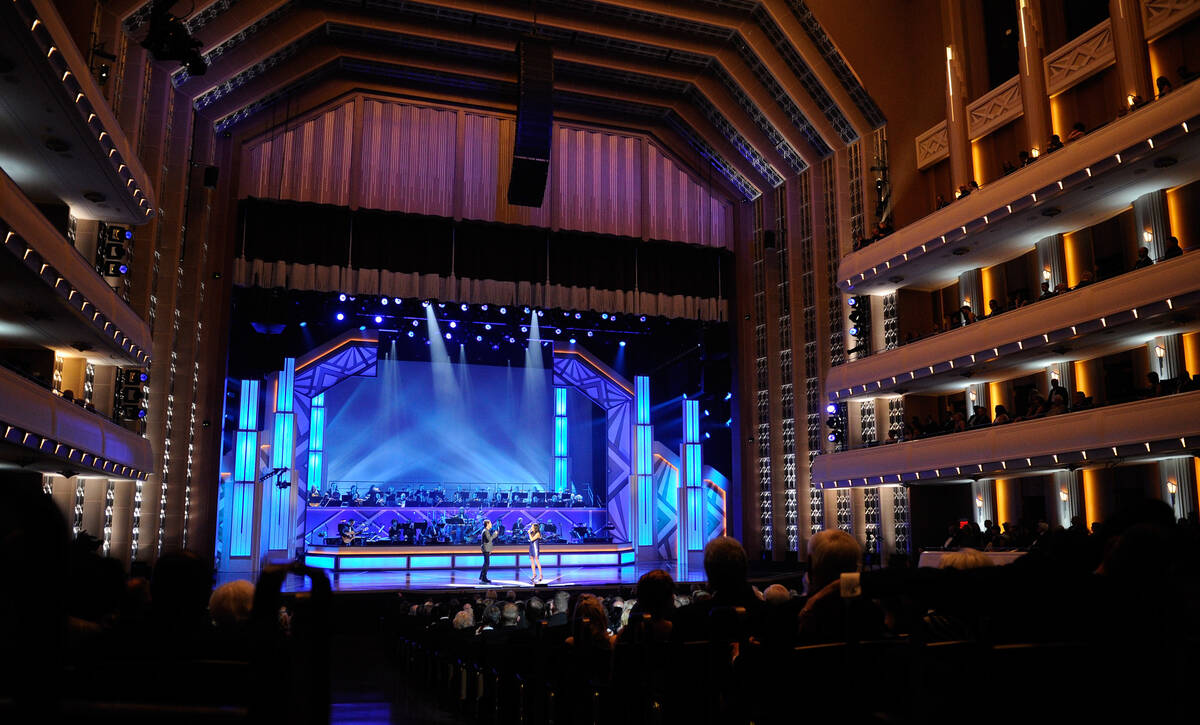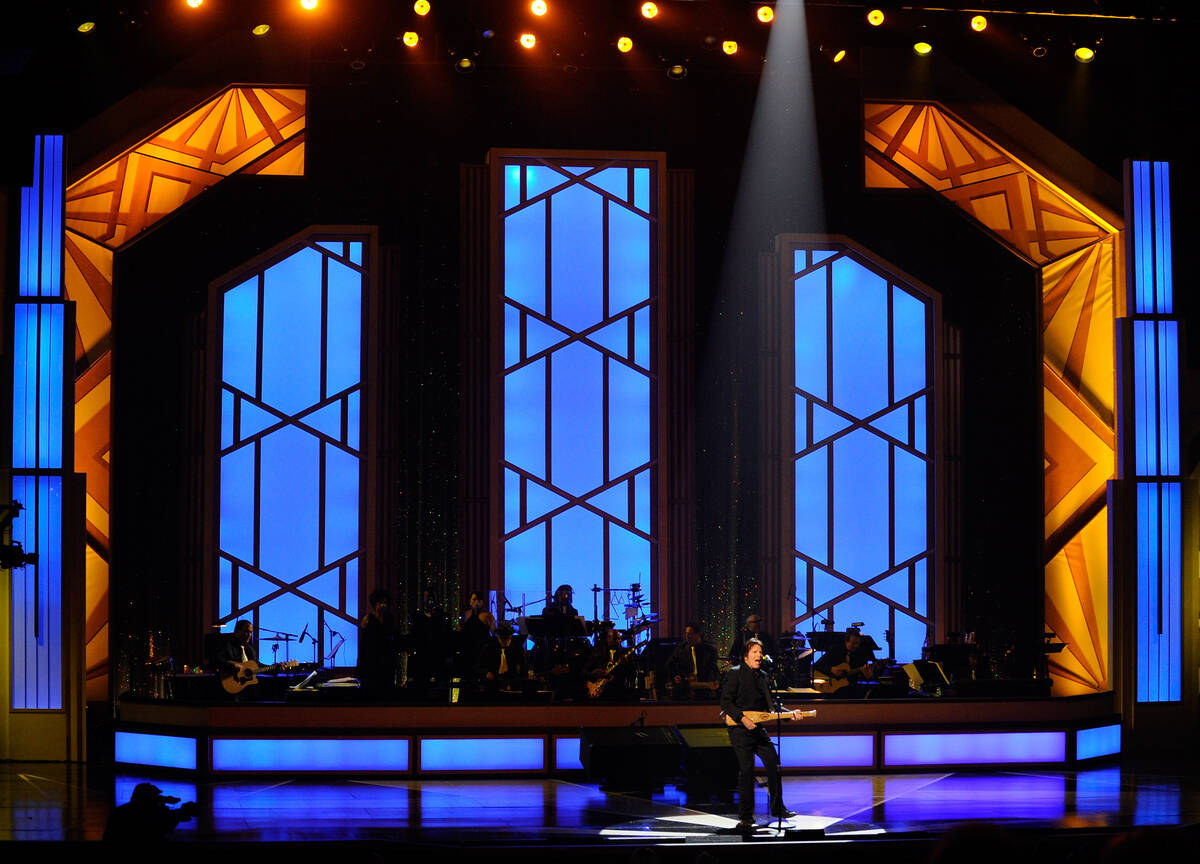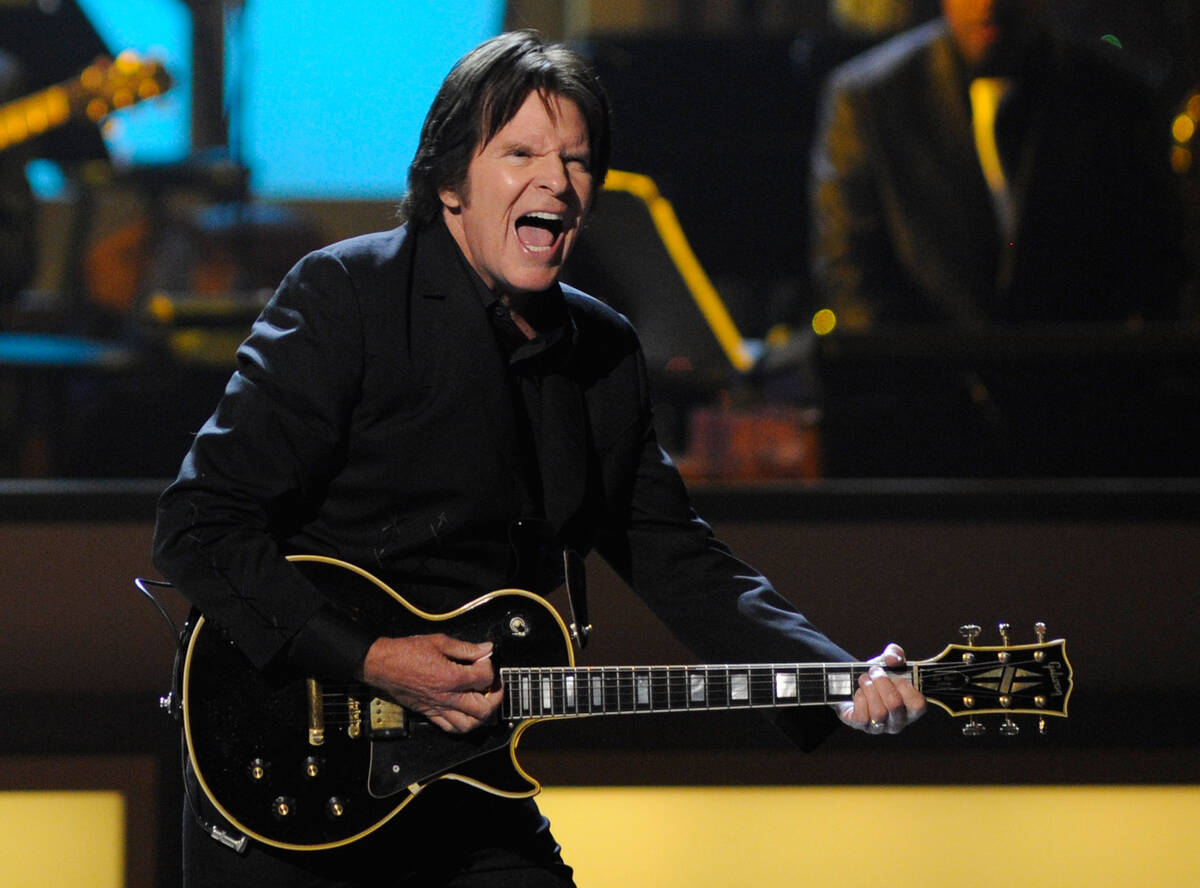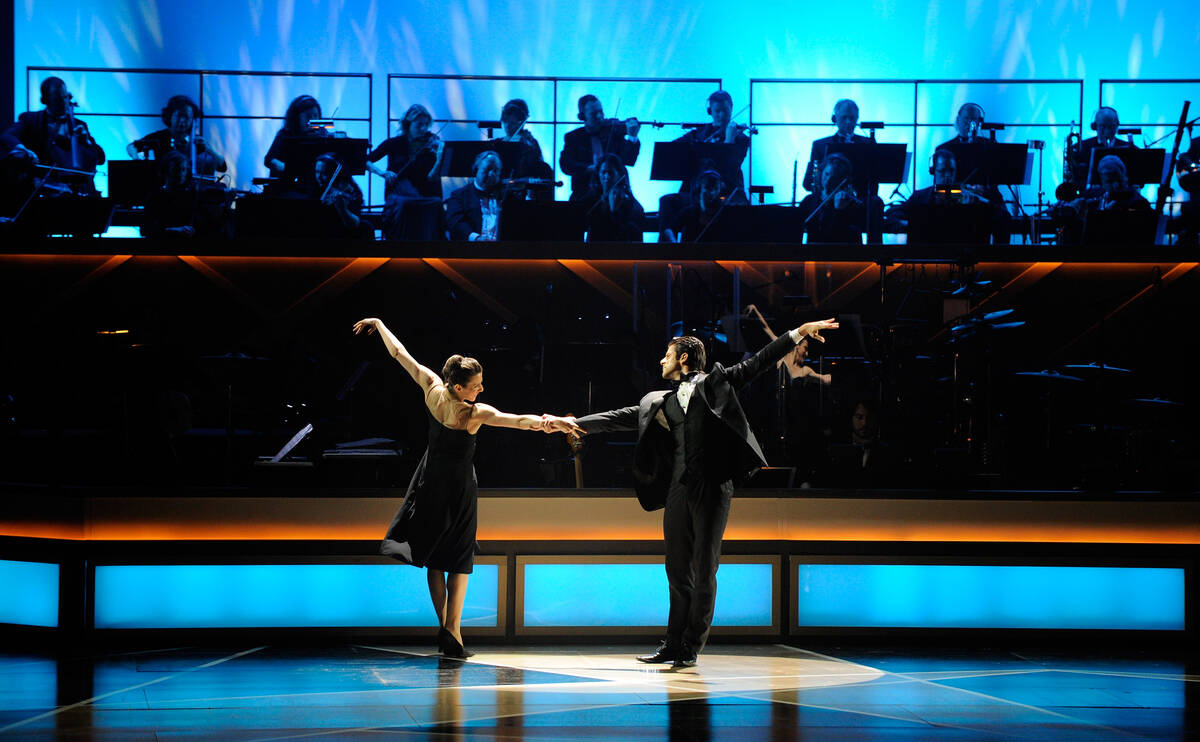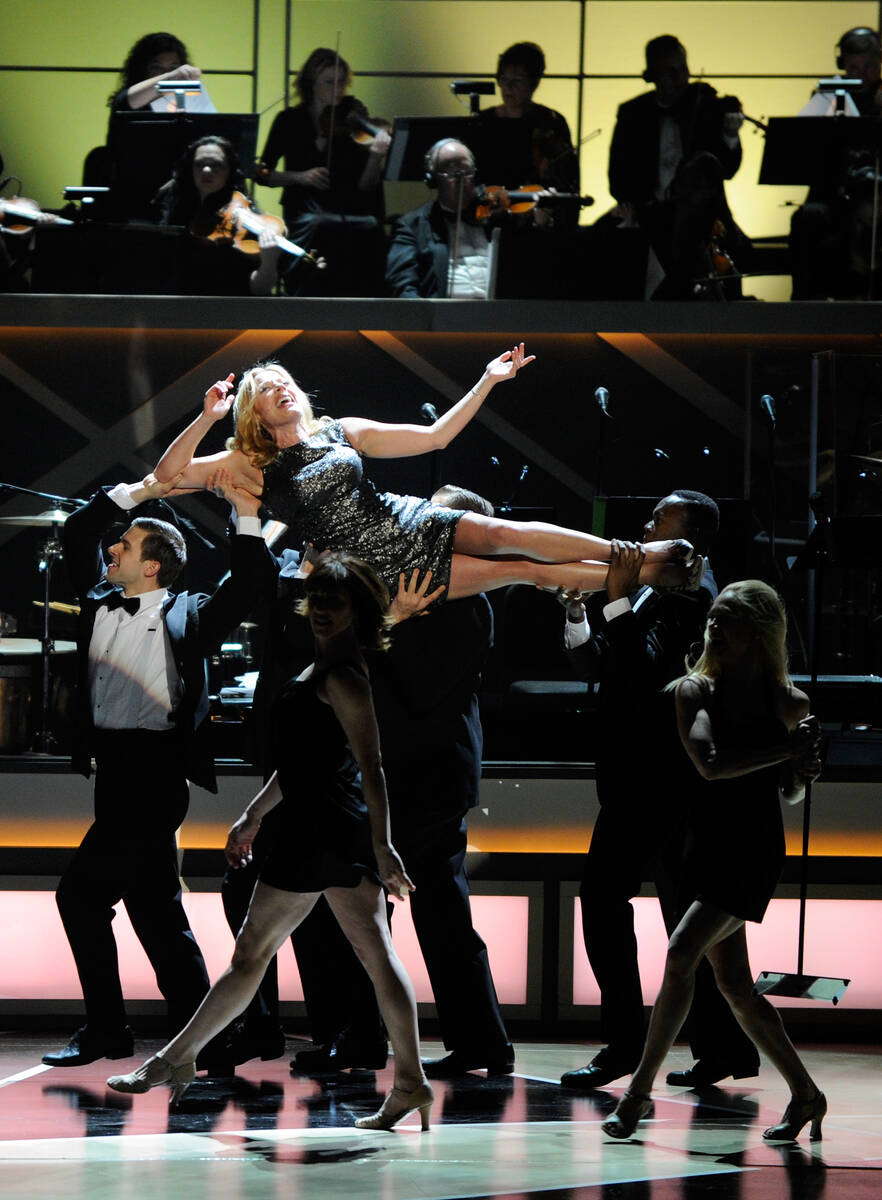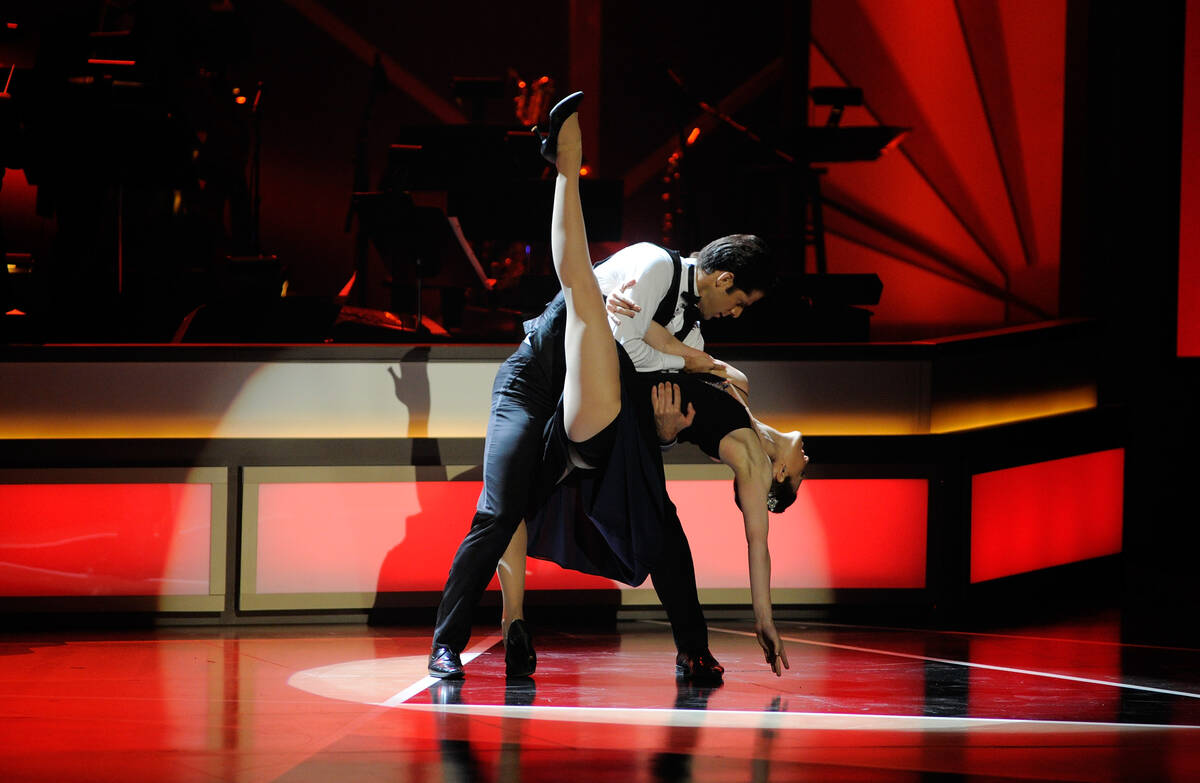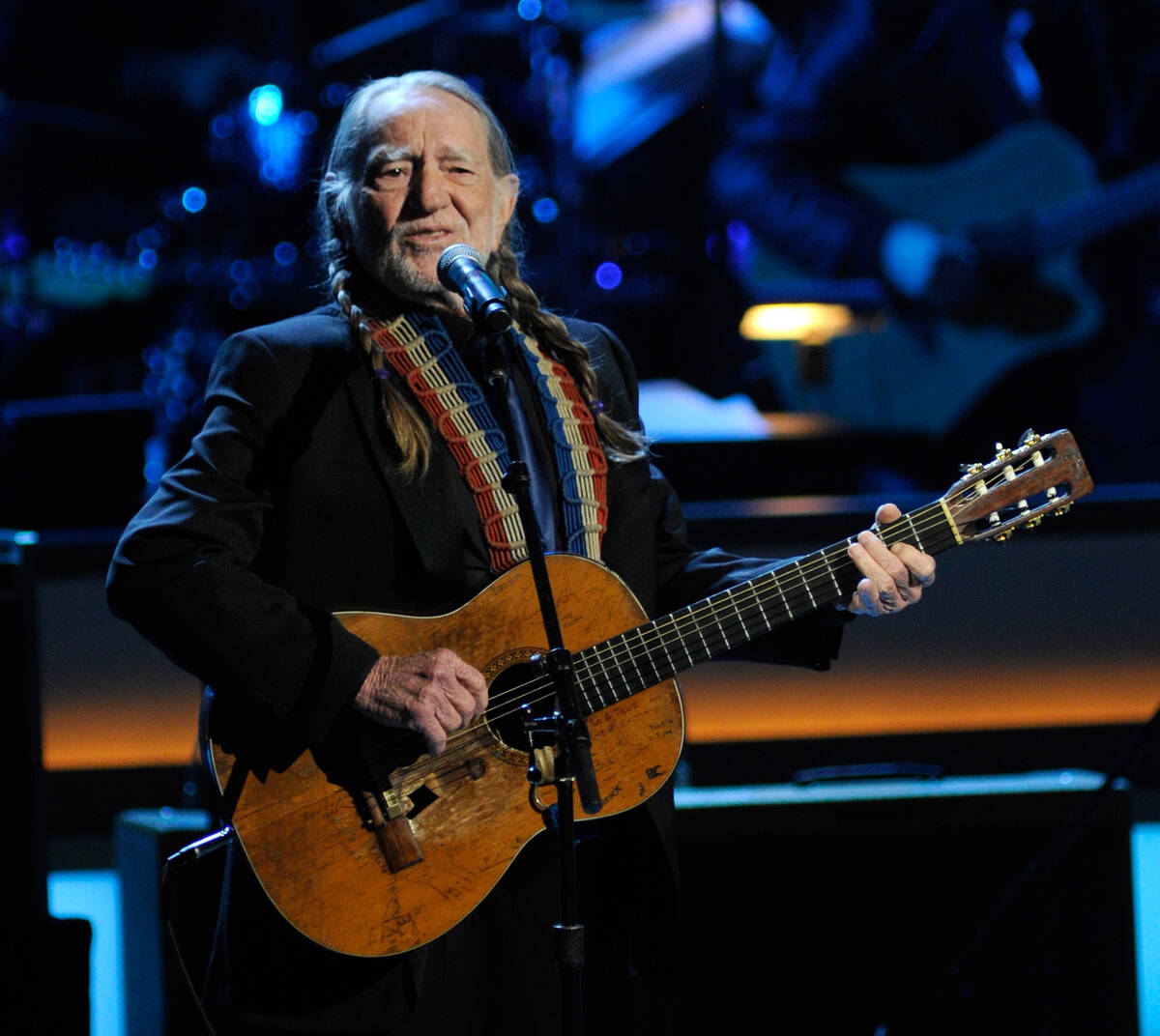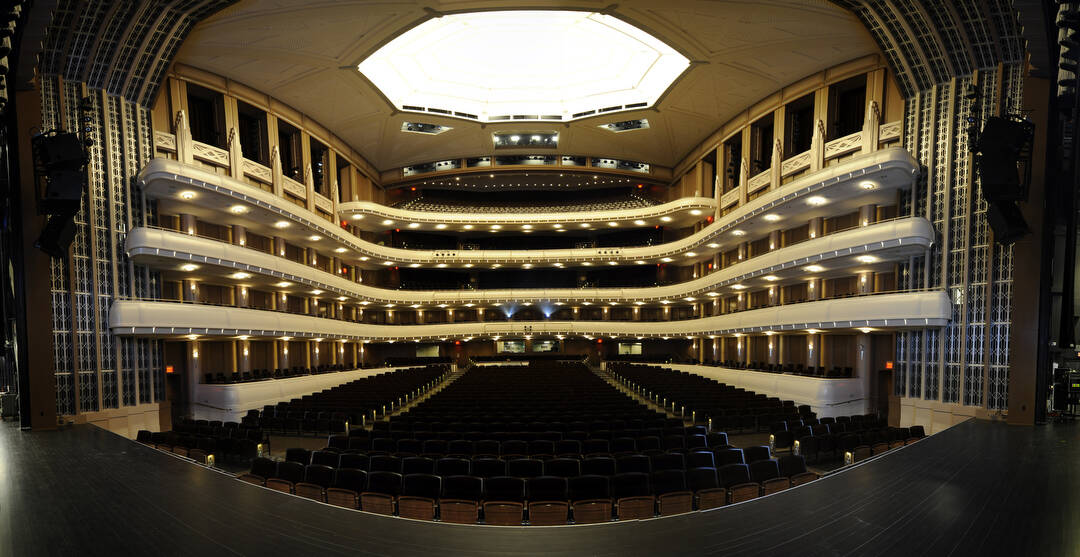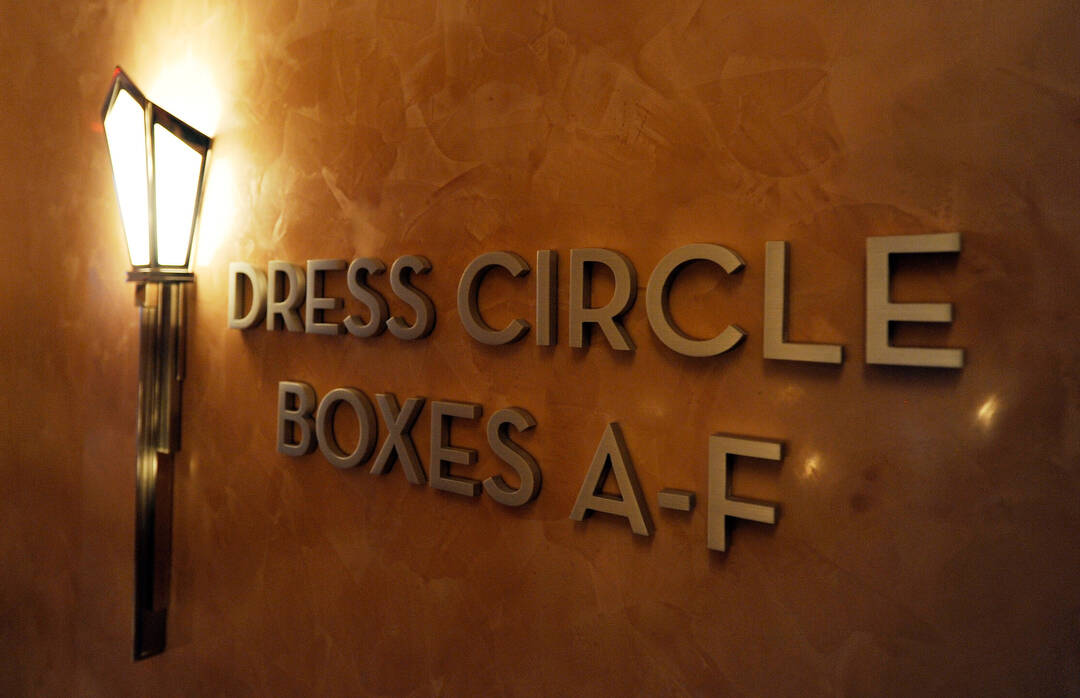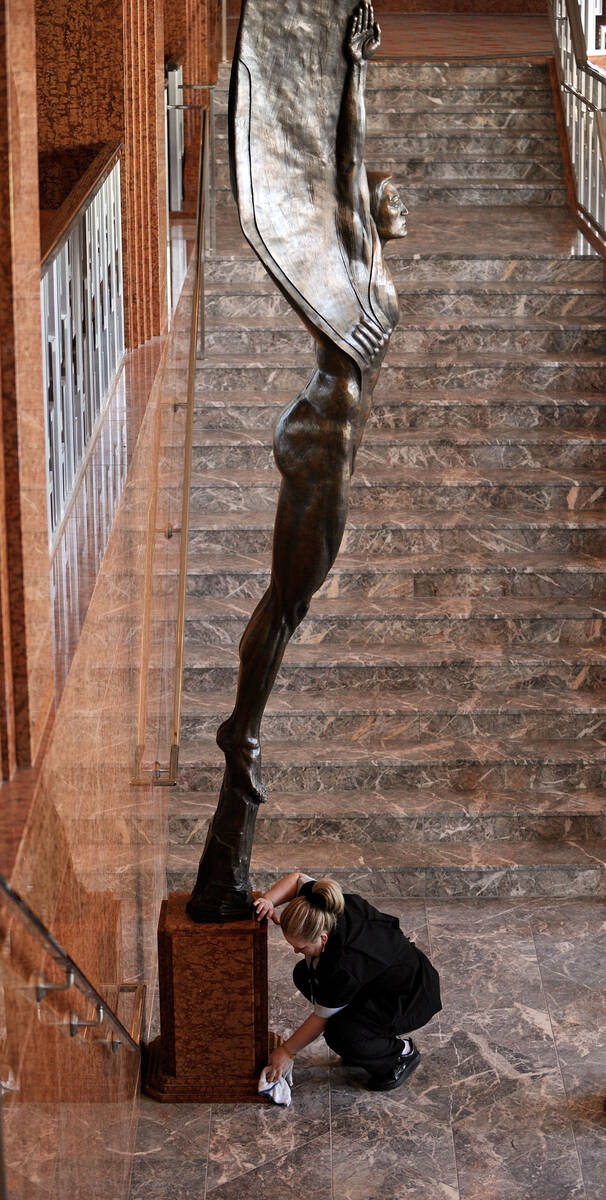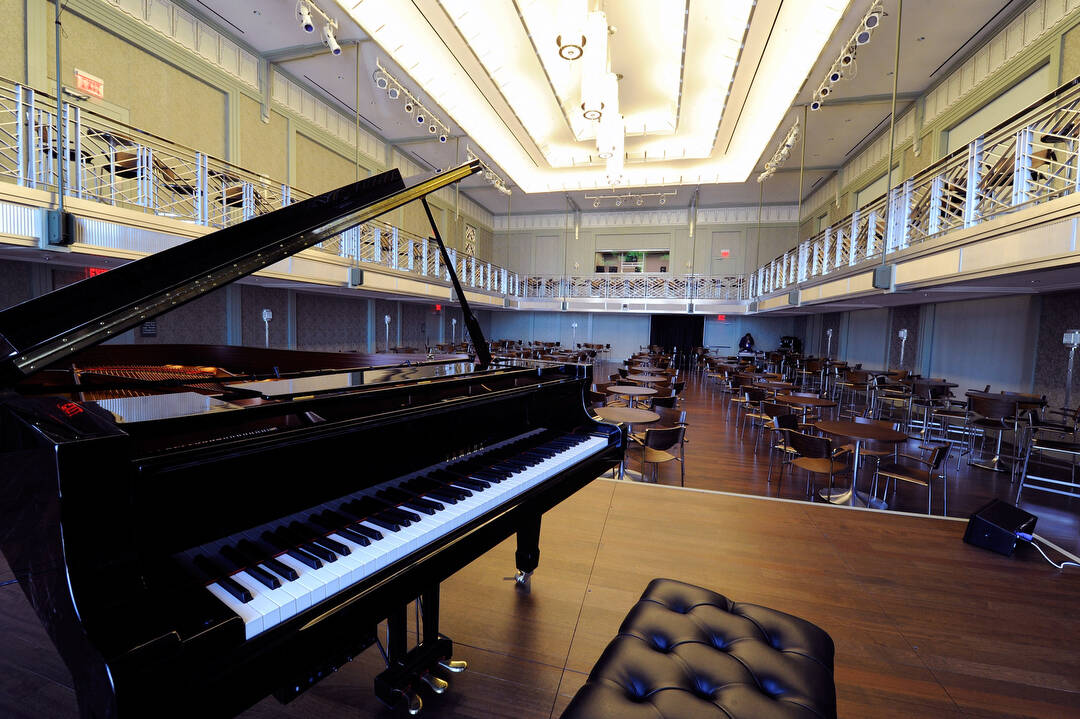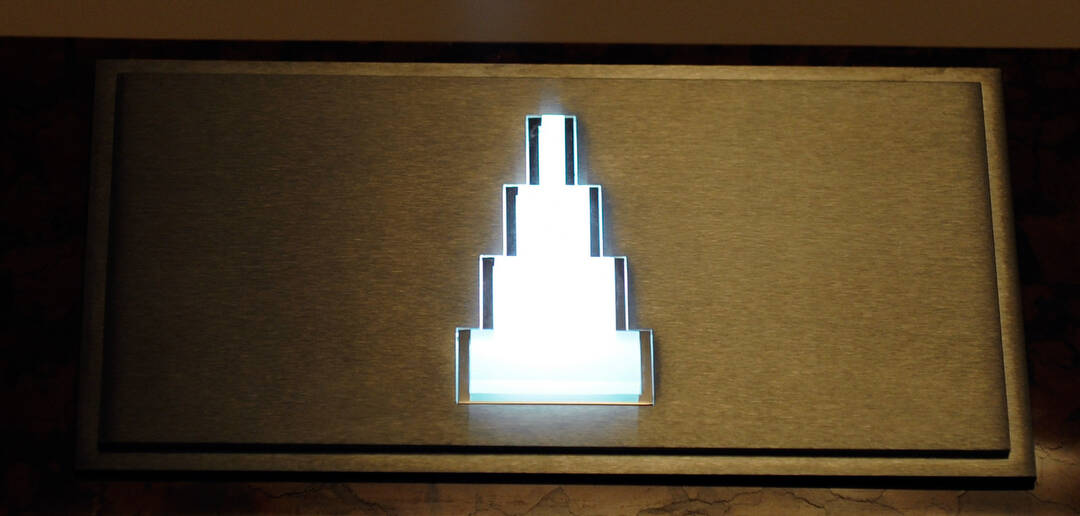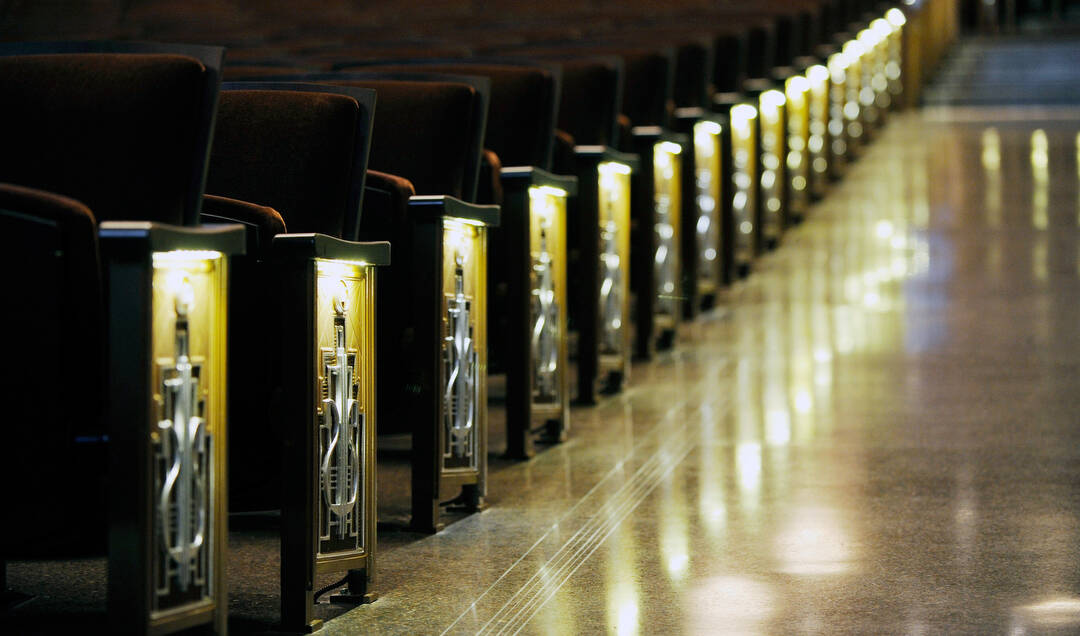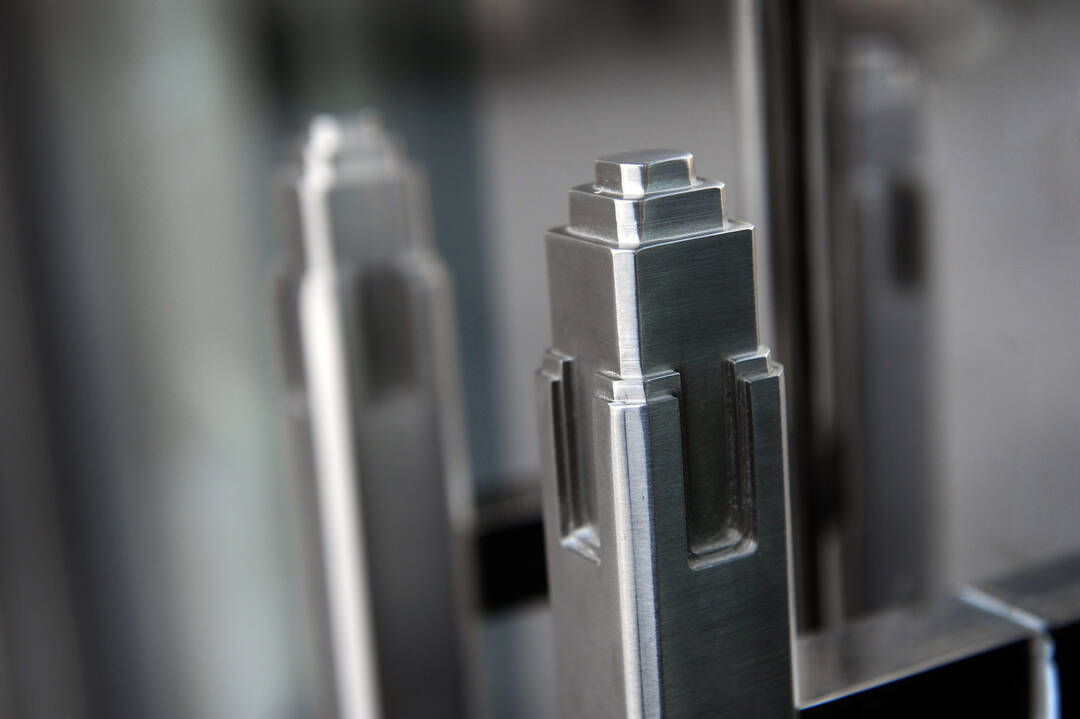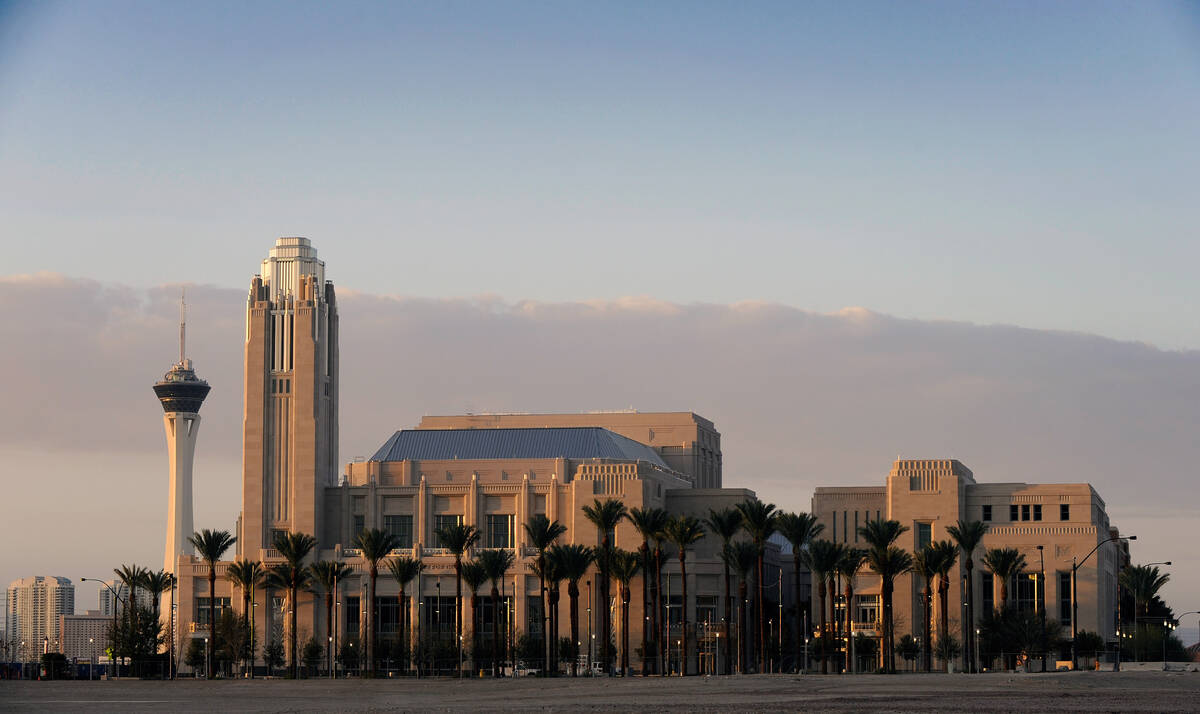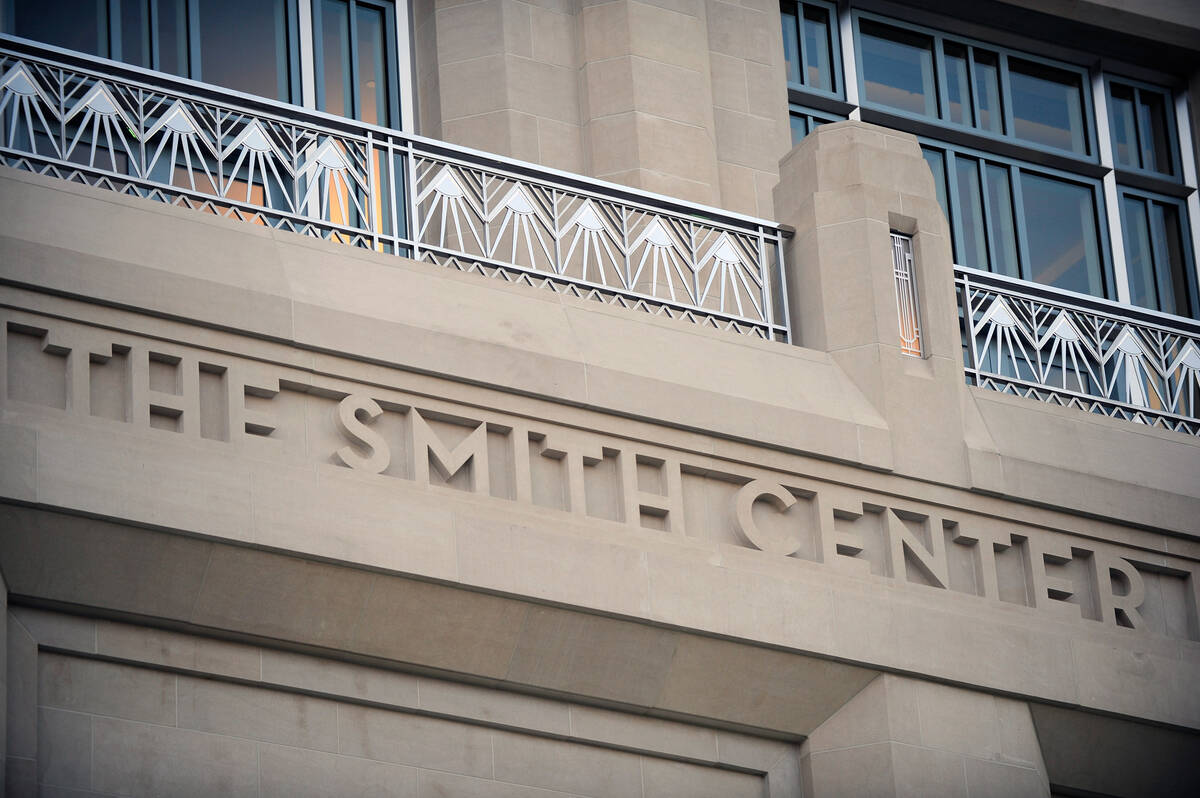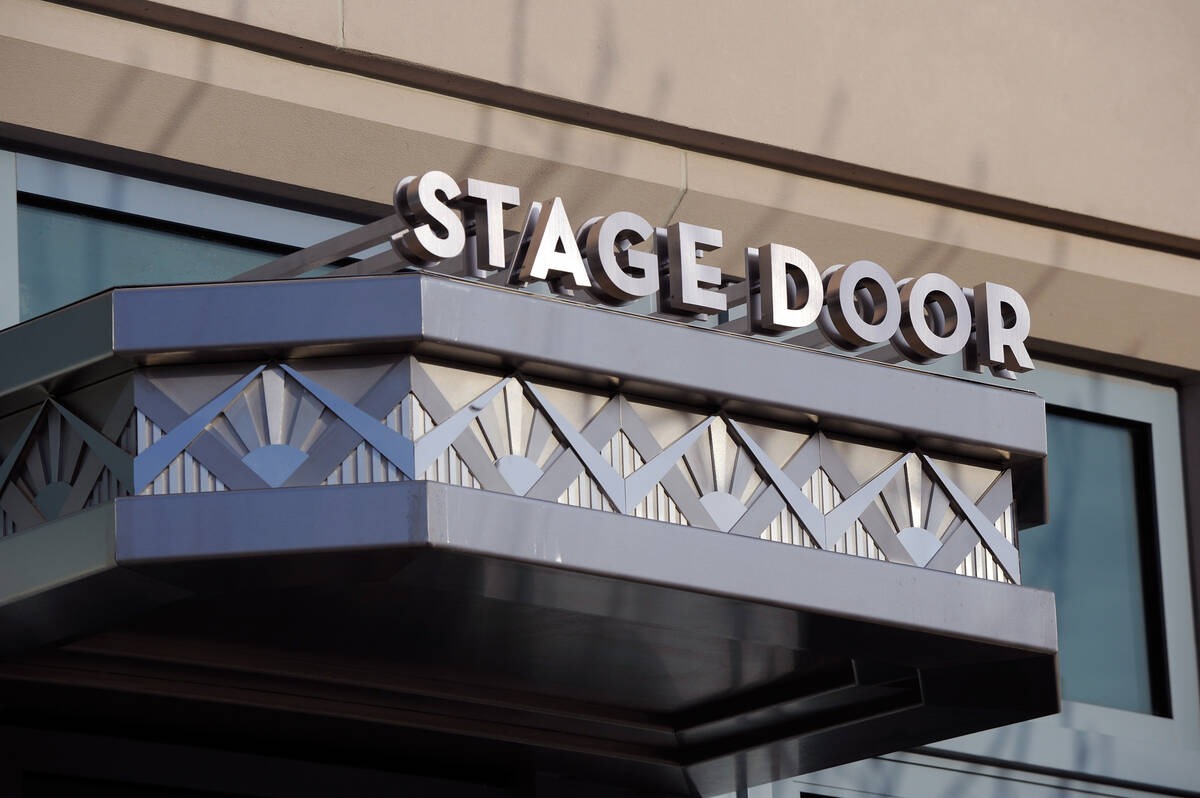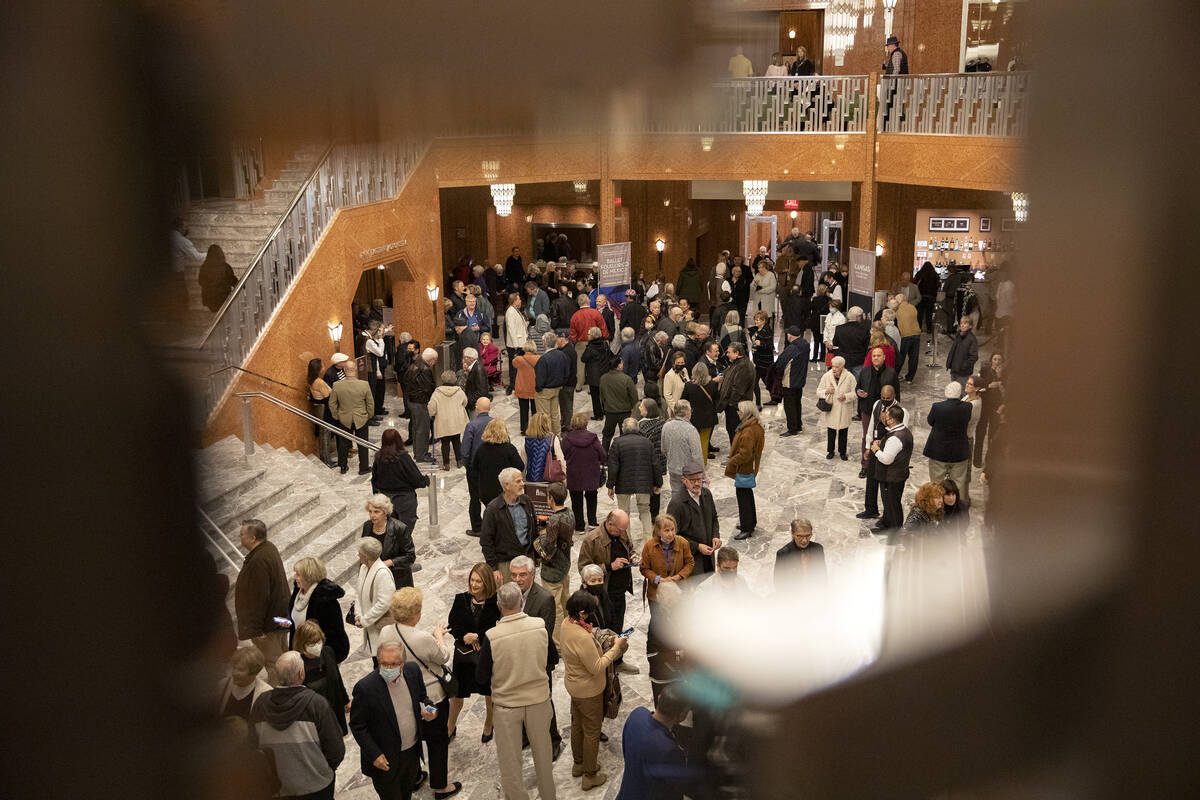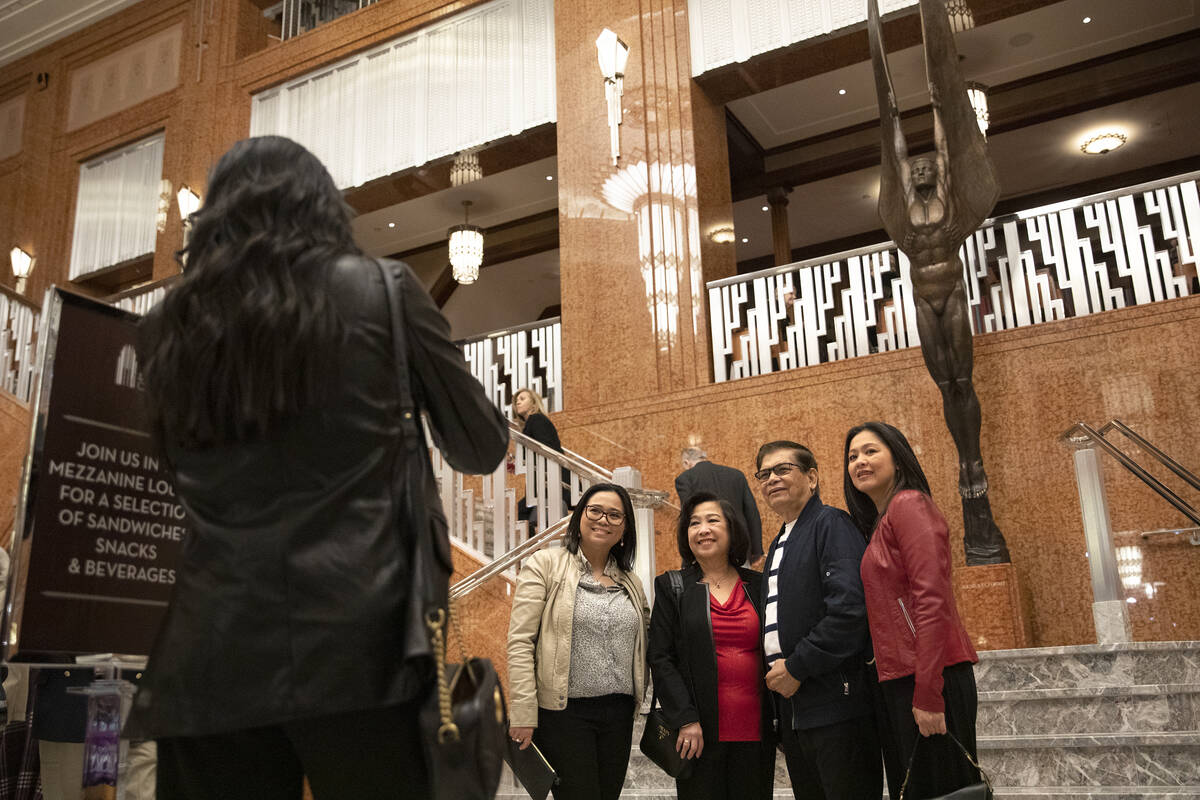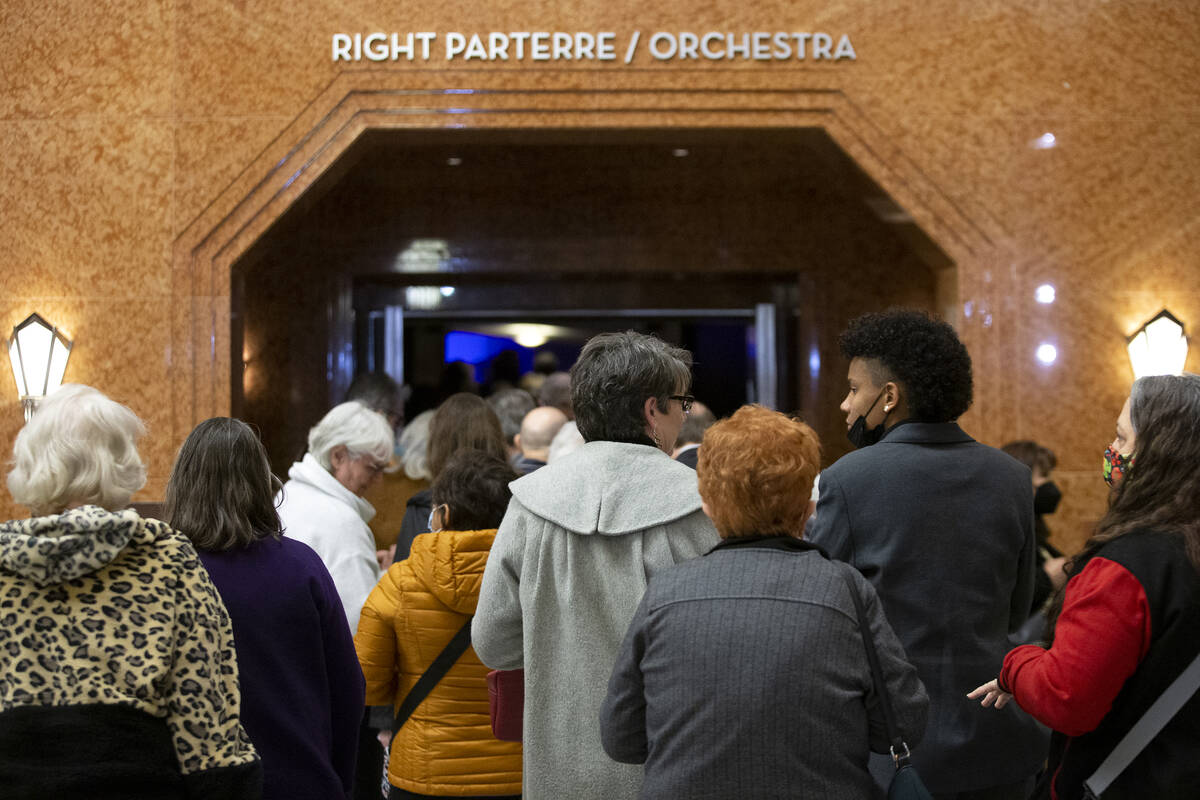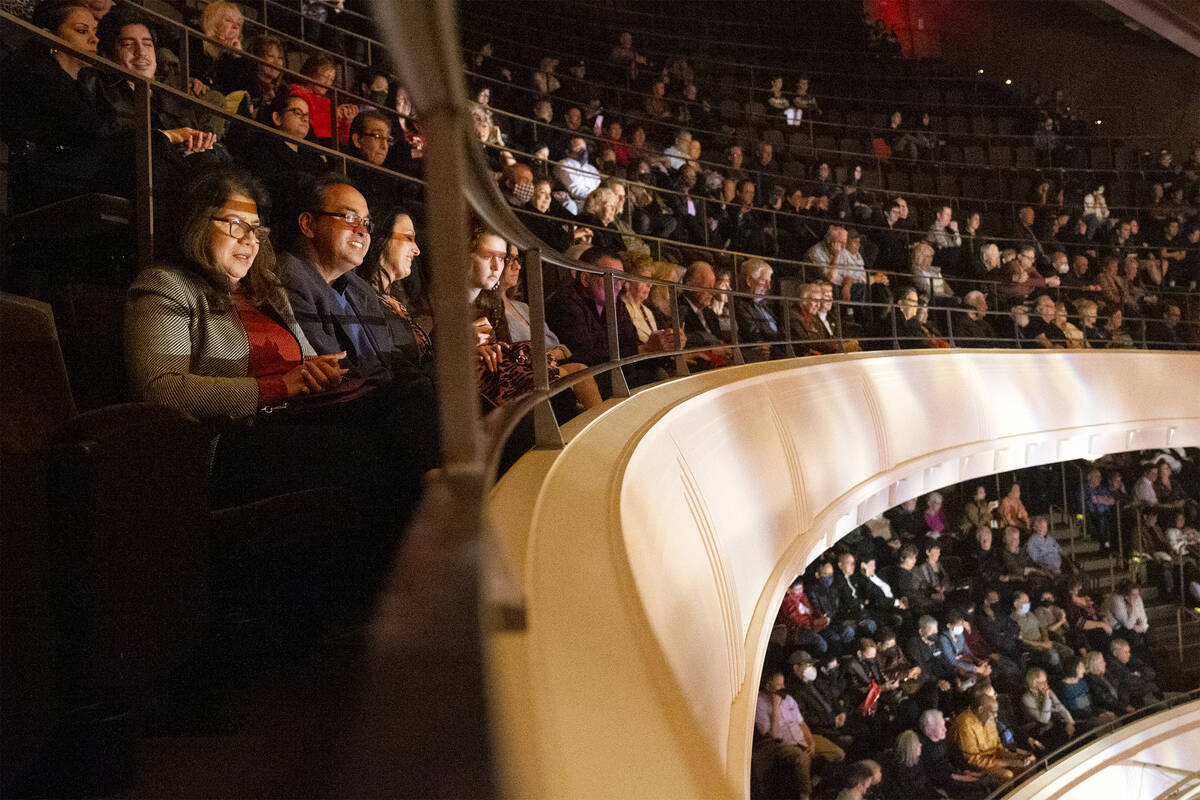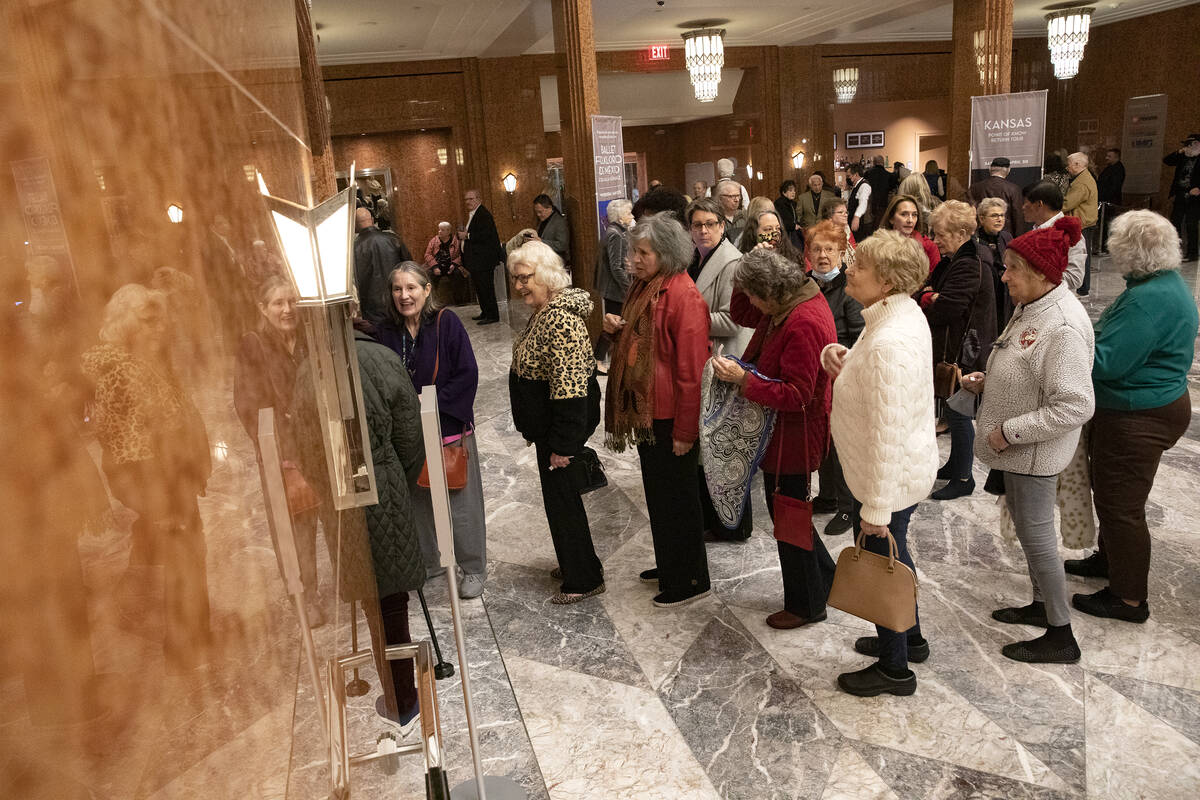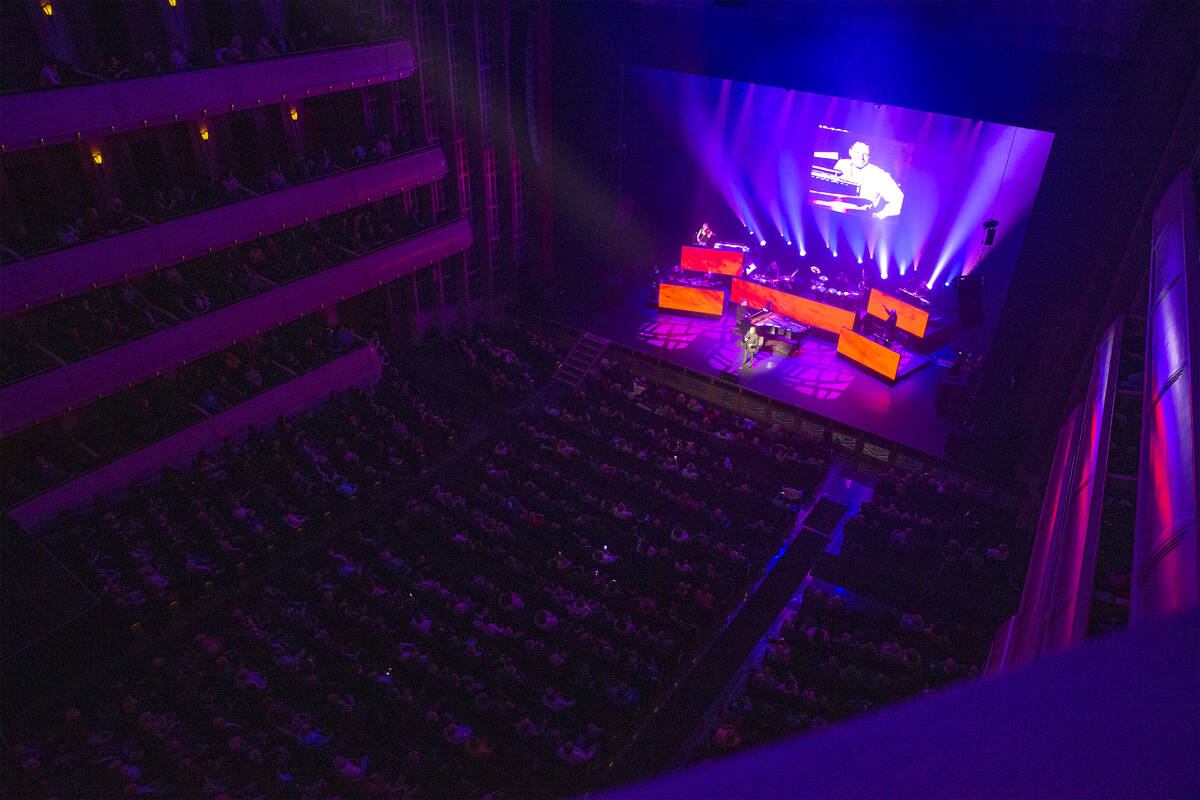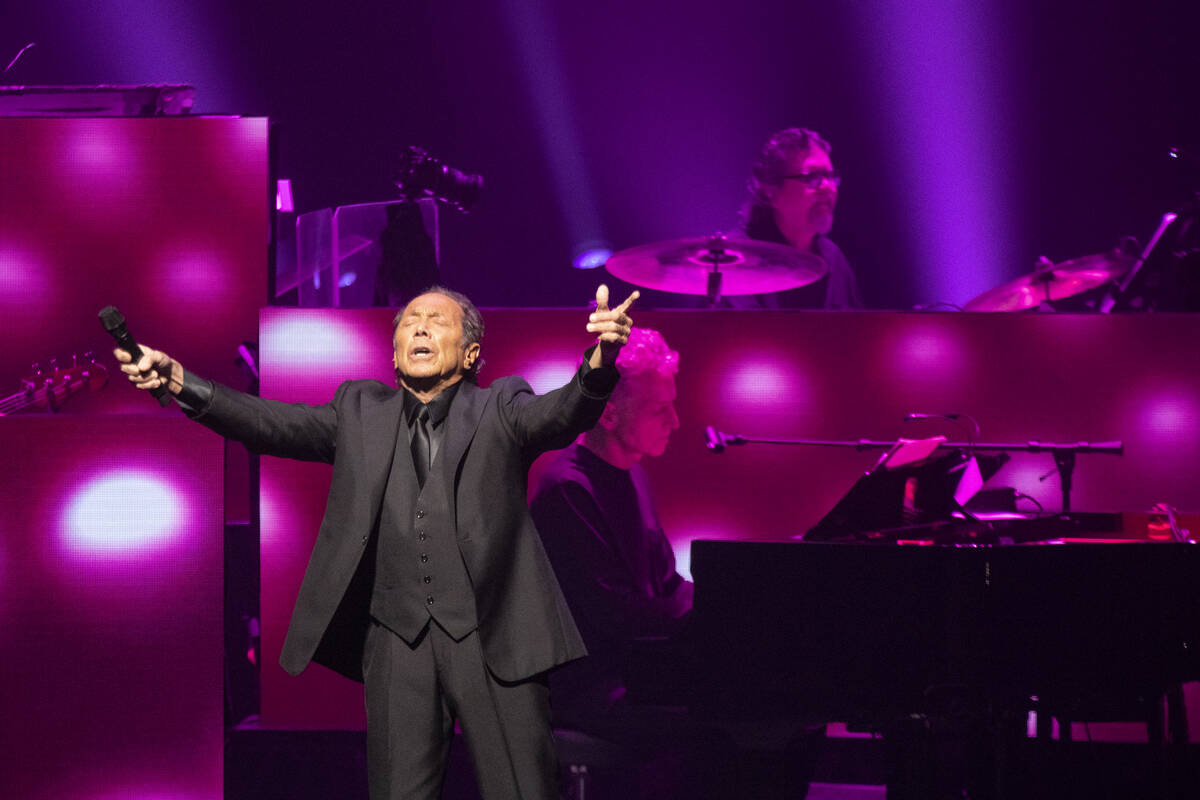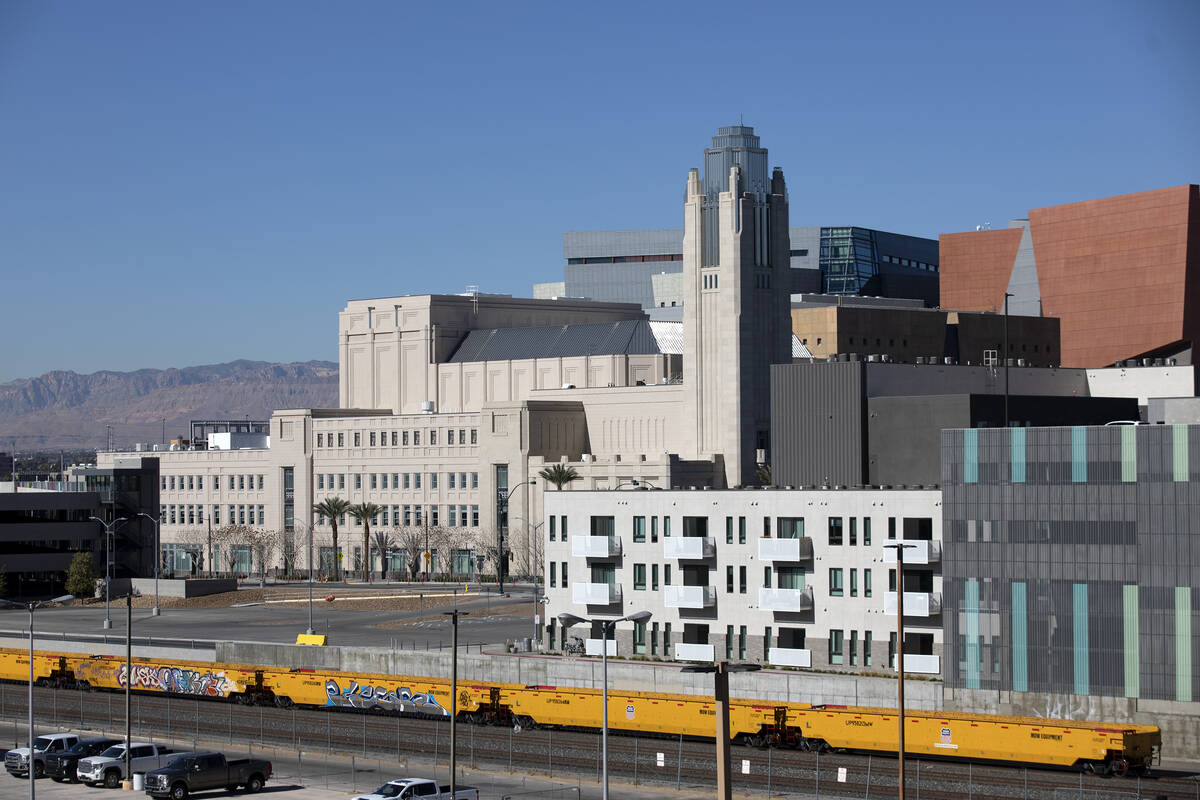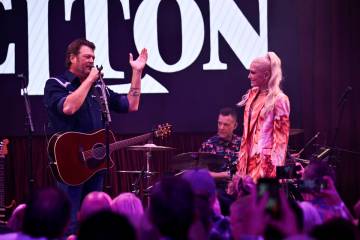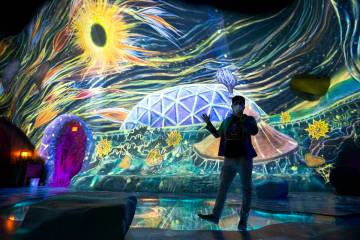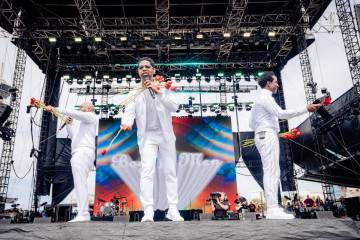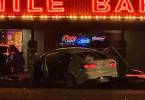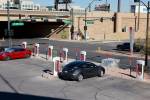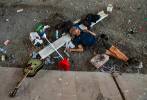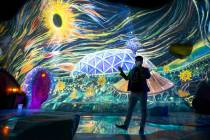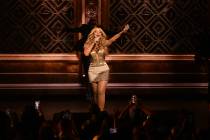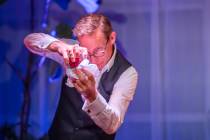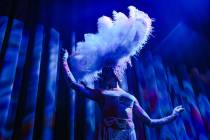‘Our own Carnegie Hall’: The Smith Center turns 10. Here’s how it became a hit.
Myron Martin has two semi-infamous quotes that he’d like to take back.
He can laugh about them now — and he does, the fabric-wrapped acoustical panels of a Smith Center conference room absorbing his chuckles on a Friday morning in late February.
The first one he uttered a little over two decades ago, a few years after Martin had relocated to Las Vegas in 1995 to become executive director of the Liberace Foundation — the late, flamboyant piano man was one of Martin’s clients when he ran the concert division for Baldwin Pianos in New York City.
Martin, who had aisle seats at Carnegie Hall and Lincoln Center when he lived on the East Coast, didn’t exactly see a performing arts bonanza in his new hometown — to him, it was more like the desert outside the city’s doors.
“The paper quoted me as saying that I felt like I had moved to a cultural wasteland,” Martin recalls with a grin more sly than sheepish. “Yeah, it wasn’t so nice — probably not the kind of thing you wanted to be known for. But it is kind of how I felt at the time.”
The second quote came in 2006, when Martin was producing “Hairspray” at the Luxor.
“I told The New York Times that I fully expected that Las Vegas was going to become Broadway West,” he recalls. “Because we had a number of Broadway shows on the Strip back then — and then that didn’t work out so well.”
Again, that smile.
It’s rare that a man seems so happy to have been proven wrong — and that’s likely because Martin himself did much of the proving.
Nearly two decades ago, he and a small group of like-minded advocates for the arts began the process of building a building that was more than a building: They envisioned a cultural hub for a city whose cultural bona fides were frequently chortled at. (What do Las Vegas and yogurt have in common? They both lack culture! Remember that old chestnut?)
Fair or not, Las Vegas long bore the reputation of a city whose myriad entertainment staples were defined by surface-level thrills, magicians and showgirls and lounge singers who were meant to catalyze a good time until it was off to the next good time an hour later.
No, Vegas was not entirely a black hole of the performing arts at the time — the city had UNLV’s Artemus W. Ham Concert Hall, where both the Prague Orchestra and Primus once played, as well as the Nevada Ballet Theatre and other quality local outlets for creatives and those who wished be the immersed in their creations.
But it didn’t have the kind of world-class performing arts center that can both open the door to a different caliber of artistic expression and also — in the best-case scenarios — provide something for a community to coalesce around.
It didn’t have a Smith Center, in other words.
“Las Vegas needed a cultural center,” explains Nancy Housells, co-founder of the Nevada Ballet Theatre, which she started in her living room in 1972 with 15 other community leaders. “UNLV had been that for many years, but we needed a performing arts center. Almost every major city in the United States has one — and it’s for a reason.”
Las Vegas has long positioned itself as a destination market for entertainment by becoming highly adept at looking outward, at creating the kind of attractions that bring people to the city in droves, from superstar music residencies to high-end nightlife.
What it’s less practiced at is looking inward, developing something with the local community in mind first.
The Smith Center was born as a $470 million manifestation of this latter way of thinking.
Related: How Myron’s became of one of Las Vegas’ best music rooms
Since opening on March 10, 2012, it has welcomed millions of show-goers, brought Broadway to town like never before, served as a home for arts organizations like the aforementioned Nevada Ballet Theatre and the Las Vegas Philharmonic and been named one of the top 10 concert halls in the world by concert industry trade publication Pollstar.
Celebrating its 10th anniversary this month, The Smith Center has arguably become Las Vegas’ greatest monument to Las Vegas.
“Vegas is an entertainment capital of the world — one of the few — you can go there and be entertained, and that’s a wonderful beacon of light for tourism,” says Tony-winning Broadway producer Kevin McCollum, who has brought shows like “De La Guarda” and “Avenue Q” to Vegas. “But the one thing about what The Smith Center did, is that it said for those people who call Las Vegas home, ‘We’re going to bring you the best from around the world.’ It’s a destination for the people of Las Vegas. I think that’s what’s very powerful about it.”
The tough sell
“Great idea; it’ll never happen.”
It was the like the chorus to a hit song, Myron Martin heard it so much.
Yes, of course, everyone can agree that having a top-notch performing arts center is a good thing for a given city and its cultural evolution — as William Shakespeare himself once famously said, “If you don’t have a quality theater in your town, I might as well just head to Cleveland, you know?”
OK, now try and fund the thing.
“It was incredibly difficult,” Martin recalls of early money-raising efforts and advocacy building for The Smith Center. “We heard words like, ‘There’s no way in hell you’re going to get any public funding for something like that.’ ‘Our foundation loves what you’re doing, but it’s not what we do, so there’s no way you’re going to get money from us.’ We heard it over and over and over again. It was really hard.”
There was also the specter of potential competition for certain acts from well-monied Strip casinos.
“I opened fully expecting that we would be a home — if not the exclusive home — for Tony Bennett when he comes to town, but I never got a Tony Bennett date. That broke my heart,” Martin acknowledges. “I tell you that because we went in with eyes wide open knowing that some artists who — in any other city — would play the performing arts center were going to play in a casino in Las Vegas, because they can afford to pay them more and they can give them giant suites and food and beverage credits and all those things that we don’t have as a nonprofit.”
Still, Martin pressed on, joined by current Smith Center board members like then-Boyd Gaming head Don Snyder, who was instrumental in developing the initial business plan, Housells, Dr. Keith Boman, Scott MacTaggart and others.
Location was key: There was another faction of performing arts center supporters back then who eyed the suburbs for the project.
“One group wanted to put it in Summerlin as a temple for the rich and famous, a place where you put on a tuxedo and drink champagne,” Martin says. “And then there was our group, who believed that for the world-class performing arts center to be successful it needed to be in the heart of the city, for a lot of reasons.
“We believed that one of the reasons that you have a facility like this is for educational purposes,” he continues. “I talked about school buses and busloads of kids coming here long before this was a reality. Having it in a central location means that buses can come from North Las Vegas and west Las Vegas and Henderson and throughout the valley — putting it in a particular suburb made it more like a place for a particular neighborhood.”
And so Martin’s group focused on downtown, and slowly began making headway: In 2005 alone, Clark County commissioners approved a car-rental tax to help fund construction; the project secured a $50 million donation from the Donald W. Reynolds Foundation and the Las Vegas City Council approved an agreement providing 4.25 acres for the facility.
“When that all happened, we really were off to the races,” Martin recalls. “It was still a little bit of a nearly impossible dream at that moment, but we knew it was real.”
Something ‘Wicked’ this way comes
The line stretched around the block, anticipation high for talking goats and singing witches.
It was the spring of 2012, and tickets had just gone on sale for “Wicked,” the smash Broadway musical that made its debut at The Smith Center later that summer.
The shows sold out quickly — it was a relief, if not necessarily a given for the venue at the time.
After a slew of Broadway hits like “The Phantom of the Opera,” “Jersey Boys,” “Avenue Q” and “Mama Mia!” opened on The Strip to hit-or-miss success — some of them lasted for years; others months — there was a wariness among Broadway producers about the sustained viability of Las Vegas as a market for their shows, fancy performing arts center or not.
“Broadway producers looked at Las Vegas timidly because there were lots of promises and high-end expectations about Vegas being a great venue for Broadway, and it didn’t work out,” Martin recalls. “So it took a lot of convincing for Broadway producers to say, ‘All right, we’ll bring our first national tour through Las Vegas,’ not the third-tier Broadway shows, but the first-tier Broadway shows.”
McCollum remembers those days well.
“There were a lot of skeptics, ‘There’s plenty of shows in Vegas,’” he notes. “But those shows are to get people in to buildings to do other things. They don’t tax you too much. They dazzle you with a lot of visuals, but they don’t really ask you to reflect on who you are and your world.”
And so when “Wicked” came to The Smith Center and proved to be an immediate seat-filler, it helped put Vegas back on the map — in far heightened fashion — for touring Broadway productions, from “Hamilton” to “The Book of Mormon” to “The Lion King.” Before long, the national tours for Broadway shows like “Kinky Boots” and “An Officer and a Gentleman” were being launched there.
“I always said that one of the challenges of doing programming in Vegas within the venues, which are tourist venues, is that you are one of many things your customer will do that night,” McCollum explains. “Whereas at The Smith Center, it’s usually dinner and show or just the show. And that’s a very different mindset; you’re not distracted, you’re making The Smith Center your destination, not the Las Vegas Strip.
“It’s a different rhythm,” he continues. “And I think you can reflect that in your community — and also, you built one of the best theaters in all of touring America. It’s just a glorious space that you guys built.”
‘Our own Carnegie Hall’
The apartment building across the street obscures what was once an unfettered view of … nothing much at all.
To stand on the parcel of land formerly owned by the Union Pacific Railroad when ground was first broken on The Smith Center in May 2009 was to fill your eyes with grand vistas of emptiness, on all sides.
Back then, there was no reason to come to these parts, especially at night, unless you were a box car or a bat.
Stroll through the area a decade later: There are buildings in place of barren turf, like the brightly colored facade of the Parc Haven, Symphony Park’s first residential housing building, with 290 units, which opened in May 2021; and the nearby Auric Symphony Park, which launched four months later with 324 apartments. Another 500 residential units are under development, as well as a new five-story luxury hotel. There’s also forthcoming restaurant/lounge Vic’s Symphony Park, founded in part by Stoney’s Rockin’ Country head Chris Lowden, as well the second location of chef James Trees’ Al Solito Posto Italian eatery.
When The Smith Center was being conceptualized, Martin and company looked to places like the Bass Performance Hall in Fort Worth, Texas, and The New Jersey Performing Arts Center in Newark, New Jersey, which were built in downtown urban locales that saw little-to-no foot traffic after dusk, but which spurred development in the surrounding areas once doors opened and theater-goers began flocking to said districts.
Gradually, these places where no one wanted to be became the place to be — and construction followed suit.
Something similar is taking place here.
“There’s no question that The Smith Center has been a catalyst — and will continue to be a catalyst — for the community and economic development of the downtown area,” says Melissa Kaiser, CEO of the Discovery Children’s Museum, which relocated from its previous home on Las Vegas Boulevard North to a building adjacent to The Smith Center in 2013.
“The evolution of the Symphony Park and Smith Center have just changed the entire trajectory of the Discovery Children’s Museum,” she notes, “the position in the community, the opportunity to move out of the space that we were outgrowing on Las Vegas Boulevard to the heart of downtown.”
The Smith Center has been similarly impactful for the Vegas performing arts community at large.
“It’s allowed our organization to reach an audience that we may not be able to reach, both locally and on a national level,” says Torrey Russell, CEO and president of nonprofit youth theater company Broadway in the HOOD, which puts on some of its productions at The Smith Center.
Basically, it’s become a home base, an incubator, for several local performers.
“It’s kind of hard to put into words as to really how important it is as a focal point of all arts organizations in Las Vegas,” says De Ann Letourneau, concertmaster for the Las Vegas Philharmonic. “The various schools and organizations that use it, such as the youth orchestras — the Las Vegas Academy just had a concert there a few weeks ago.
“Every year they do the High School Musical Theater Awards,” she continues. “You know how they make the joke, ‘How do you get to Carnegie Hall?’ ‘You practice.’ Now, it’s kind of like we have our own Carnegie Hall.”
Speaking of said venue, it wasn’t that long ago that Martin was a recent Las Vegas transplant, pining for those aisle seats to the storied concert hall.
What to do, then, but go ahead and build one here?
“We told our acousticians, our theater planners, our architects — the whole team — that The Smith Center had to start with Carnegie Hall as the base, and that we should try to improve on it,” Martin recalls of designing the facilities in which he currently sits, intent on one-upping one of the world’s most renowned theaters. No big deal, right?
“We dreamed really, really big,” he says, “but the reality of The Smith Center, from the day we opened, from opening night, the reality was better than the dream.”
Contact Jason Bracelin at jbracelin@reviewjournal.com or 702-383-0476. Follow @jbracelin76 on Instagram.



